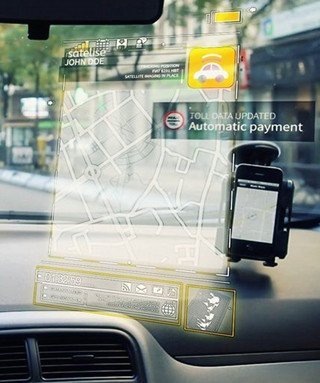Mobile tolling in Europe is not as far as you think

There is an app for everything, we already know that, but when health insurance is being linked to devices monitoring our movement, it is obvious the shift is much bigger than switching boxes. We are progressively becoming directly connected to our transport infrastructure and while the methods are changing, the innovation is really in the model, not the technology.

The Satelise app will start trials this year
We already stated that we expect the mobile tolling model to be deployed very shortly and detailed the models by which this will happen in the ETC Global Study. Yet mobile tolling is often understood through the GeoToll example in the US. The phone has an RFID sticker that communicates with the gantry. We talked to Antonio García Fernández, the Head of Technology & innovation at Cintra. Their new mobile tolling programme Satelise simplifies the process down to a tracking app similar to the ones found in the Usage Based Insurance industry.
As the Spanish toll industry goes through one of its most difficult hours, it is understandable that operators look at any element of friction that could slow or inhibit drivers’ use of the toll network.
Mobile tolling serves many purposes in that context:
– Easing the registration process, especially for occasional users who frown at the necessity to rent an OBU.
– Creating a much closer relationship between the operator and its drivers. Satelise can use the direct communication to create and manage rewards, discounts and associated services.
– Positioning the operator as a future mobility provider with an app that can be used for many transport modes in the future.
As with Usage Based Insurance, smartphone-only solutions also have their drawbacks, namely that
– it is impossible to know which car is being driven
– it is difficult to detect the mode of transport
– background apps empty the phone’s battery
– they do not support vehicle-centric services
– privacy has to be managed very carefully
Maybe mobile tolling is too much too soon, but for operators like Cintra, it is about preparing for the future of road charging and mobility pricing. As Antonio mentioned, “gantries will not be physical for very long and the future of mobility pricing cannot work with an OBU”.
The models are multiplying fast, the partnership also; parking, car sharing, PAYD insurance, traffic avoidance… the whole ITS world is becoming smartphone centric and every actor in the chain wants to be the payment platform provider. In fact Cintra is already talking to insurers today.
In the meantime, mobile tolling will be a way to save on infrastructure cost, brings flexibility in the day-to-day operations such as category change or variation in the pricing system and of course a way to extend the charged network.
We will look at mobile tolling in practice next month

